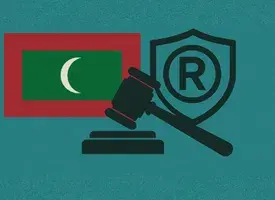FAQs on telecommunication and media laws in India
List of FAQs on telecommunication and media laws in India
telecommunication-faq
The inception of Telecom sector in India can be traced back to the commencement of telegraph network in India. Telegraph was probably the first mode of communication which laid down the foundation for the evolution of the existing telecommunication sector in India. In numbers India’s telecommunication sector is third largest in the world with 621 million connections.[i]
National Telecom Policy 1994 (NTP)- The Policy focused on objectives like including availability of telephone on demand, provision of world class services at reasonable price, promoting exports, improving India’s competitiveness in globally, increase in foreign investments, attracting FDI and reach of telecom services in remote areas. Later on the NTP Policy, 1994 was revamped by the New Telecom Policy, 1999 which envisaged several reforms in the sector like affordable communication system, telecommunication facilities in remote and hilly areas. With the framing of this Policy, the Government of India recognized the importance of telecommunications for the development nation’s Information Technology industry and also for widespread ramifications on the entire economy of the country.
Thereafter, in view of privatization and liberalization a need was felt for the establishment of an independent regulatory body and accordingly the Government formulated the Telecom Regulatory Authority of India Act, 1997 which provided for the establishment of TRAI (Telecom Regulatory Authority of India).
Established by the Government of India in 1984, the C-DoTis the Telecom Technology Development Centre of the Government of India. The C-Dot was established with the objective to build a centre for excellence in the area of telecom technology. The main objectives of C-DoT is to work on telecom technology services, provide current and future requirements of telecommunications, support Telcos and service providers in the introduction of new technologies and to strengthen the Indian Telecom manufacturing base.
The Act was established with the aim to establish the Telecom Regulatory Authority of India and the Telecom Disputes Settlement and Appellate Tribunal (TDSAT) to regulate the telecommunication services, adjudicate disputes, dispose appeals and protect the interest of services providers and telecom sector to promote and ensure orderly growth of the telecom sector.
The TRAI constitutes of a Chairperson, two- whole time members and two- part time members appointed by the Central Government from amongst the persons who have special knowledge and professional skills, experience in the telecommunication sector, industry, finance, accountancy, law, management or consumer affairs.
One of the main functions of TRAI is to enable licensing of telecommunication technologies like data services, carrier services, access services and unified licensing.
Licensing- Under the licensing of internet services, the Government established a liberal licensing regime to increase internet penetration across the nation. Under the access services, the unified access service providers within their area of operation provide services like cover collection, carriage, transmission, delivery of voice and/or non-voice messages over Licensee’s network by deploying circuit and/or packet switched equipment.
Under the cellular mobiles services, the nation is divided into 23 service areas consisting of 19 telecom circle service areas and 4 metro service areas for providing Cellular Mobile Telephone Services.
Unified Licensing- After considering the recommendations of TRAI, the Government decided to grant Unified Licenses to licensees to overcome the existing segregation of licensing, registration and regulatory mechanisms to enhance affordability, increase access, delivery of multiple services and reduce cost. The basic features of UL include delinking allocation of spectrum from the licenses and obtaining it separately as per prescribed procedure and authorisation of services which inter alia include unified license, access service, internet service, national long distance etc.
Some of the main functions of TRAI include making recommendations on need of new service providers, terms and conditions of license to service providers, revocation of license for non-compliance of terms and conditions of license, technological improvements in telecom services and efficient management of available spectrum.
Other essential functions of TRAI includes ensuring compliance of terms and conditions of license, fix terms of services regarding inter-connectivity between service providers, ensure technical compatibility and lay down standards of quality of service.
TRAI is also vested with the power to call upon any service provider to furnish information and conduct investigations wherein it considers it expedient to do so (Section 12 of the Act).
Established under the TRAI (Amendment) Act of 2000, the Tribunal adjudicates dispute between a licensor and licensee, between service providers and between a service provider and group of persons (Section 14 of the Act). The Tribunal for the purposes of discharging its functions has the same powers as is vested in a Civil Court and is enforceable as a decree.
An appeal from any order of the Tribunal lies in the Supreme Court
Composition- TDSAT comprises of a Chairperson and two member who are appointed by the Central Government in consultation with the Chief Justice of India.
Spectrum management is an essential limb of the TRAI and it refers to the process of regulating use of radio frequencies to promote efficient use and gain a net social benefit. The TRAI is vested with the power to manage spectrum which includes areas like:
- Wireless Planning and Coordination (WPC)
- Independent External Monitor
- e-Collection of WPC & WPF
- Auction of spectrum
- Auction of spectrum in 1800 MHZ and 800 MHZ bands
- Auction of spectrum in 1800 MHZ and 900 MHZ bands
- 3G & BWA Auction Spectrum
- Auction of Spectrum in 1800 MHZ, 900 MHZ
The WPC is responsible for Frequency Spectrum Management, including licensing and catering to the needs of all wireless users in the country. It issues licenses to establish, maintain and operate wireless stations and is divided into sections like Licensing and Regulation (LR), New Technology Group (NTG) and Standing Advisory Committee on Radio Frequency Allocation (SACFA). SACFA makes the recommendations on major frequency allocation issues, formulation of the frequency allocation plan, making recommendations on the various issues related to International Telecom Union (ITU).2G Spectrum Scam- The 2G spectrum scam case was a telecommunication scan which involved politicians and government officials. A Public interest litigation was filed in the Supreme Court in relation to the scam wherein the Apex Court declared the allotment of spectrum as unconstitutional and arbitrary and also cancelled 122 licenses issued by A. Raja (Former Minister of Telecommunications & IT), the prime accused. The Court further remarked in the case that Raja wanted to favour some companies at the cost of public exchequer, virtually gifting away national assets
FDI upto 74% (49% under automatic route) is permitted in basic, cellular mobile, paging and Value Added Service, and Global Mobile Personal Communications by Satellite, Radio Paging Service, Internet Service Providers (ISP’s).
FDI upto 100% permitted in respect of Infrastructure Providers providing dark fibre, Electronic Mail and Voice Mail.








